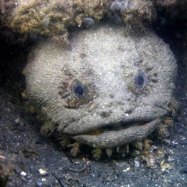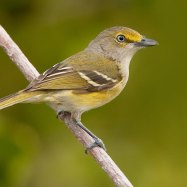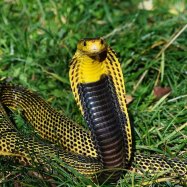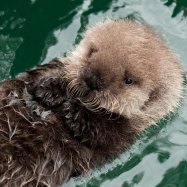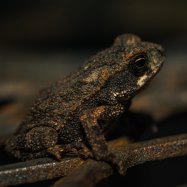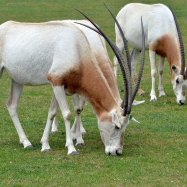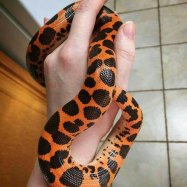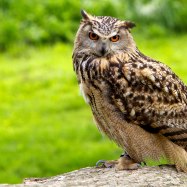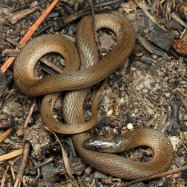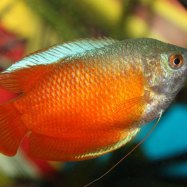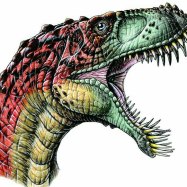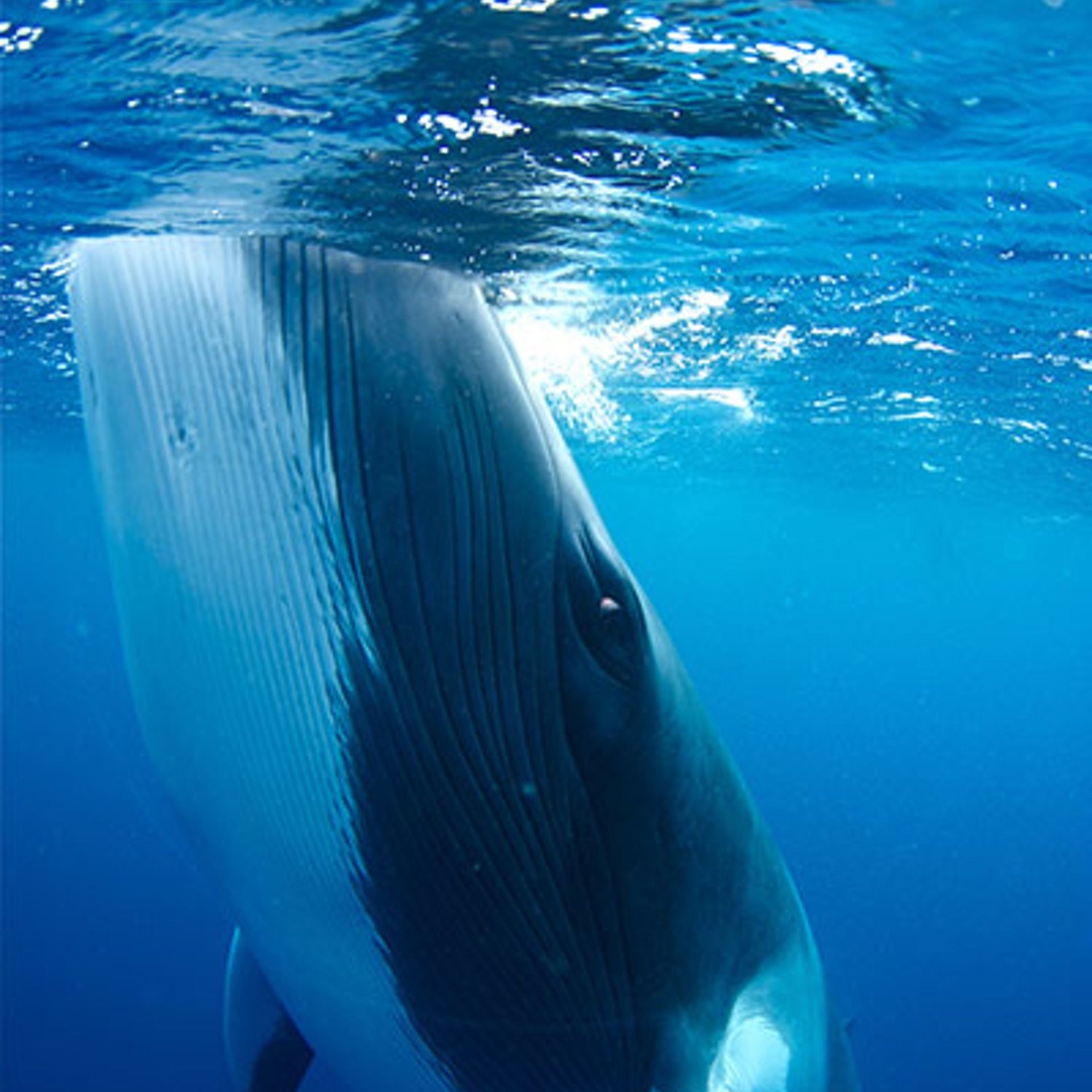
Minke Whale
7-10 meters
The Minke Whale, known for its slender and streamlined body shape, is one of the smaller baleen whales found in the world's oceans. These majestic creatures can grow up to 7-10 meters long and belong to the Balaenopteridae family. Keep an eye out for these gentle giants during your next ocean adventure! #MinkeWhale #OceanLife #BaleenWhales
Animal Details Summary:
Common Name: Minke Whale
Kingdom: Animalia
Habitat: Marine
A Marvel of the Oceans: The Fascinating Minke Whale
The world's oceans are home to some of the most magnificent and awe-inspiring creatures, including the majestic and graceful Minke Whale. These gentle giants have sparked the curiosity and wonder of marine biologists and ocean lovers for centuries, and for a good reason. From their intriguing behavior to their impressive physical attributes, these animals have captured the hearts and minds of people worldwide. Let's dive into the world of the Minke Whale and uncover the mysteries and marvels that make them such a unique and significant part of our planet's biodiversity Minke Whale.Meet the Minke Whale
Scientifically known as Balaenoptera acutorostrata, the Minke Whale is a species of whale belonging to the Balaenopteridae family, making them a distant cousin of the iconic Blue Whale. This family of whales is known for their impressive size, and the Minke Whale is no exception. They can grow up to 7-10 meters in length, weighing around 10 tons, making them among the smallest whales in this family.As for their external appearance, Minke Whales have a classic whale-like look, with a streamlined and slender body covered in dark gray skin. One of their most distinguishing features is their stark white undersides, making them stand out in the vast blue ocean. They also have a curved dorsal fin and a small, pointed head, giving them a distinct shape that sets them apart from other whale species.
Where Do They Live?
If you're planning on going on a whale-watching trip, knowing where to spot these gentle giants is crucial. Minke Whales have a global distribution and can be found in all of the world's oceans, from the tropics to the frozen arctic waters. However, they are most commonly found in colder seas, including the North Atlantic, North Pacific, and Southern Hemisphere waters Megalania.These whales are highly migratory creatures and tend to follow their food sources, which means they can be spotted in various regions at different times of the year. In the summer months, they can be seen near the Arctic and Antarctic regions, where they feed on krill and small schooling fish. In the winter, they tend to migrate to warmer waters to breed and give birth.
Feeding Habits of the Minke Whale
Like most whales, the Minke Whale is a carnivorous animal and primarily feeds on a diet of small schooling fish, such as herring and capelin, along with krill and other tiny crustaceans. They use their baleen plates to filter these small organisms from the water as they swim with their mouths open. These baleen plates are made of keratin, the same material that forms our hair and nails, and are essential for these whales' feeding method.Minke Whales are known for their speed and agility, which allows them to swim at high speeds and use their sleek bodies to chase and catch their prey. They are one of the few whale species that engage in bubble net feeding, where they trap fish by creating a ring of bubbles around them and then lunging through the middle to scoop up the trapped fish. This behavior is a remarkable display of their intelligence and coordination.
Family Life of the Minke Whale
Minke Whales are social creatures and can often be seen traveling in small groups or pairs. However, they are not as social as other whale species and tend to be more solitary in their behavior. Female Minke Whales reach sexual maturity at around eight years of age and give birth to a single calf every two years, with a gestation period of ten months. These calves are around 4-4.5 meters long at birth and are nursed by their mothers for six months before they are weaned.These whales are known for their complicated and beautiful songs, and studies have shown that they have a complex social order and communication system. They have been observed making a range of vocalizations, from high-pitched whistles to low-frequency moans and grunts. While the exact communication system of Minke Whales is not fully understood, it is believed that they use these songs to attract potential mates and establish their social hierarchy.
The Threats to Minke Whales
Despite being one of the most common and widespread whale species, Minke Whales are still facing threats that endanger their populations. The most significant threat to these creatures is human activities, including commercial whaling and accidental entanglement in fishing gear. Despite international bans on whale hunting, these gentle giants are still illegally hunted in some regions, and their populations continue to decline.Additionally, ocean pollution, including plastic and chemical pollution, poses a severe danger to these animals. The ingestion of plastic and toxic substances can have fatal consequences for Minke Whales, and the increasing levels of these pollutants in our oceans are a cause for concern.
Conservation Efforts for Minke Whales
To protect these majestic creatures, various conservation efforts have been put in place worldwide. Several international organizations are working tirelessly to protect Minke Whales and their habitats, including the International Whaling Commission (IWC) and the Convention on International Trade in Endangered Species (CITES).In addition to these efforts, many countries have established protected areas and regulations to limit human interference with these animals. For example, in the US, the Marine Mammal Protection Act prohibits the hunting, harassment, or capture of Minke Whales. Similarly, in the UK, Minke Whales are protected under the Wildlife and Countryside Act, making it illegal to intentionally or recklessly harm or disturb them.
A Symbol of Our Oceans' Health
Minke Whales are not only fascinating creatures, but they are also an essential indicator of the health of our oceans. As apex predators, their populations are a reflection of the overall state of the marine ecosystem. If their numbers continue to decline, it could have a ripple effect on the entire food chain, causing a detrimental impact on our oceans.Therefore, it is crucial to protect and conserve these animals, not just for their own sake but also for the well-being of our oceans. As individuals, we can contribute to this cause by reducing our use of plastic, properly disposing of waste, and supporting sustainable and responsible fishing practices.
The Wonders of the Minke Whale
In conclusion, the Minke Whale is a magnificent and extraordinary creature that has captivated humans with its grace, agility, and intelligence. These gentle giants play an essential role in the marine ecosystem and have an undeniable charm that has made them one of the most beloved animals of the seas.However, their populations continue to face threats, making it our responsibility to protect them before it's too late. We must cherish these animals and do our part in preserving our oceans' biodiversity so that future generations may also have the opportunity to witness the wonders of the Minke Whale.

Minke Whale
Animal Details Minke Whale - Scientific Name: Balaenoptera acutorostrata
- Category: Animals M
- Scientific Name: Balaenoptera acutorostrata
- Common Name: Minke Whale
- Kingdom: Animalia
- Phylum: Chordata
- Class: Mammalia
- Order: Cetacea
- Family: Balaenopteridae
- Habitat: Marine
- Feeding Method: Carnivorous
- Geographical Distribution: Worldwide
- Country of Origin: Various
- Location: Oceans
- Animal Coloration: Dark gray with white undersides
- Body Shape: Slender and streamline
- Length: 7-10 meters
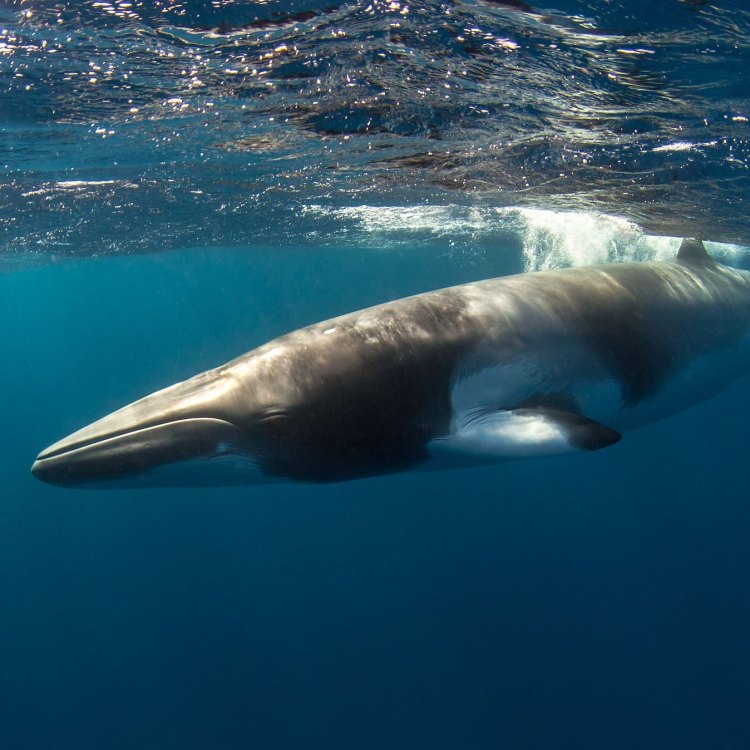
Minke Whale
- Adult Size: Medium-sized
- Average Lifespan: 30-50 years
- Reproduction: Sexual
- Reproductive Behavior: Mating occurs in warmer waters
- Sound or Call: Varied vocalizations
- Migration Pattern: Some populations migrate, while others remain resident
- Social Groups: Solitary or in small groups
- Behavior: Curious and agile swimmers
- Threats: Hunting, habitat destruction, pollution, climate change
- Conservation Status: Least Concern
- Impact on Ecosystem: Top predator, helps regulate food chain
- Human Use: Commercial hunting, whale watching
- Distinctive Features: White bands on flippers, distinctive dorsal fin
- Interesting Facts: One of the smallest baleen whales, named after a Norwegian whaler
- Predator: Orcas
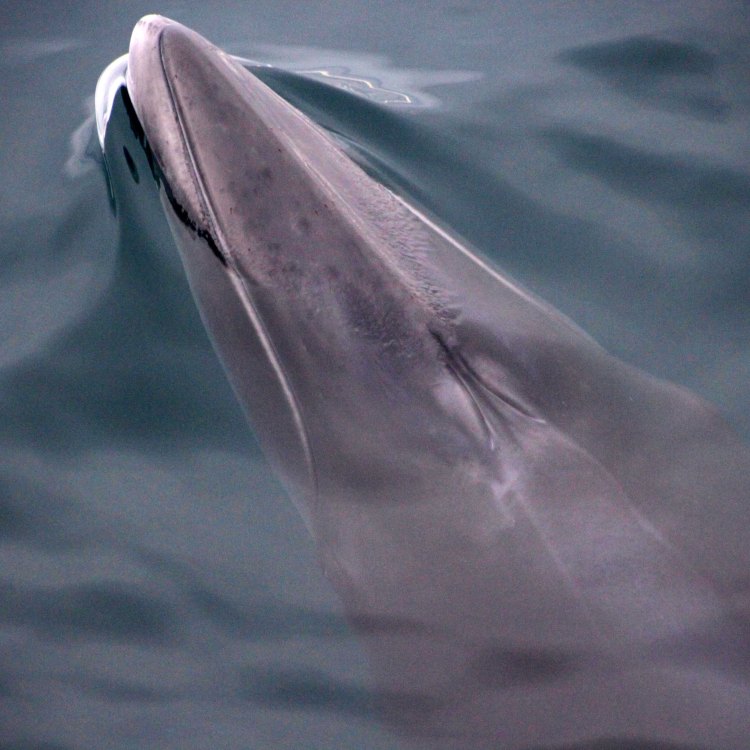
Balaenoptera acutorostrata
The Mighty Minke Whale: Discovering the World of the Curious and Agile Swimmer
The ocean, vast, mysterious, and full of wonders. Despite being responsible for sustaining life on earth, it is still largely unexplored, leaving an air of mystery around its inhabitants. One such majestic creature that roams the depths of the ocean is the Minke Whale.Minke whales are a species of baleen whales found in all of the world's oceans, except for the Arctic PeaceOfAnimals.Com. They are considered as one of the smallest baleen whales, measuring up to 35 feet in length and weighing around 5-10 tons. But do not let their size deceive you, for these gentle giants play a crucial role in the ocean's ecosystem and have been the subject of human fascination for centuries. Let us dive deeper into the world of the Minke whale and discover what makes them so unique and vital to our planet.
A Medium-Sized Marine Marvel
The Minke whale, also known as the lesser or common minke whale, belongs to the family Balaenopteridae, which includes other baleen whales such as the blue whale and fin whale. As mentioned earlier, they are one of the smallest species of baleen whales, measuring up to 35 feet in length and weighing around 5-10 tons. They have a streamlined body with a pointed snout, making them agile swimmers. Their upper body is dark grey, while their undersides are lighter in color.These whales are divided into two subspecies, the common minke whale (Balaenoptera acutorostrata) and the Antarctic minke whale (Balaenoptera bonaerensis). The former is found in the North Atlantic, North Pacific, and Arctic oceans, while the latter inhabits the Southern Ocean Maine Coon.
A Long Lifespan and Reproductive Behavior
The average lifespan of a Minke whale is estimated to be between 30-50 years. However, there have been reports of some individuals living up to 60 years. These whales reach sexual maturity at around 7-8 years, and the females give birth to a single calf every 1-2 years.Minke whales reproduce through sexual reproduction, with mating occurring in warmer waters. The males attract the females by producing low-frequency sounds, known as pulses, which can be heard up to 7 miles away. The females then choose their mate among the competing males.
Once the female is pregnant, the gestation period can last up to 10 months. The calves are born in warm, shallow waters, usually between January and February. They weigh around 800 pounds at birth and are nursed by their mothers for 4-6 months. It is customary for the Minke whale to care for their offspring, with the females nursing their calves for a longer time than other baleen whales.
Varied Vocalizations and Unique Migration Patterns
One of the most intriguing characteristics of Minke whales is their vocalizations. These whales produce a variety of vocalizations, from low-frequency moans to higher-pitched whistles and chirps. Each call serves a different purpose, such as communication, navigation, and locating food. These vocalizations are also used during mating to attract a mate.As for their migration pattern, it differs among populations. Some populations migrate to warmer waters during the winter months to breed and give birth, while others prefer to stay in their resident areas year-round. The North Atlantic Minke whales, for example, are known to migrate from the Arctic to the Caribbean to mate and give birth.
Solitary or Small Groups- Understanding Their Social Structure
Minke whales are considered highly sociable animals, but their social structure is still not fully understood. They are known to be either solitary or travel in small groups of 2-3 individuals. However, during the breeding season, they may gather in larger groups, known as pods, with one male and several females.These whales are also known to display a curious behavior, often approaching boats and other objects in the water. They are agile swimmers and are known to breach, or jump out of the water, and spyhop, or raise their head vertically out of the water, curious about their surroundings.
Threats and Conservation Status
Unfortunately, Minke whales have faced numerous threats over the years, the most significant being commercial hunting. In the 19th and 20th centuries, these whales were heavily hunted for their meat, oil, and baleen plates. This led to a significant decline in their population, which is still recovering.Apart from hunting, Minke whales also face threats such as habitat destruction, pollution, and climate change. The increase in plastic pollution, oil spills, and underwater noise pollution poses a significant threat to these gentle creatures. Climate change also affects their food sources, such as krill and small fish, leading to malnutrition and starvation.
Despite these threats, the Minke whale is currently listed as "Least Concern" on the IUCN Red List of Threatened Species. This is due to their widespread distribution and relatively stable population in some regions. However, this does not mean that conservation efforts should be disregarded. It is crucial to continue monitoring their population and addressing the threats they face to ensure their survival.
The Minke Whale's Impact on the Ecosystem
Being a top predator in the food chain, Minke whales play a vital role in regulating the ocean's ecosystems. They feed on small fish and krill, helping to control their population and maintain a healthy balance in the ocean's food web. Their movements also aid in the distribution of nutrients, which is essential for the growth and survival of other species.The decline in their population due to commercial hunting has had a significant impact on the ecosystem, causing a ripple effect on other marine species. Therefore, it is essential to protect these gentle creatures not only for their sake but also for the sake of the ocean and all its inhabitants.
Human Use: From Hunting to Whale Watching
Humans have had a complex relationship with Minke whales for centuries. These whales have been hunted by various cultures, often for their meat and oil. In Japan, for example, Minke whales are still hunted under the guise of "scientific research."However, in recent years, there has been a shift towards a different kind of human use for Minke whales - whale watching. Whale watching has gained popularity in many parts of the world, with people wanting to witness the majestic creatures in their natural habitat. This form of ecotourism has proved to be more sustainable and has helped bring awareness to the conservation efforts of these whales.
Distinctive Features and Interesting Facts
The Minke whale is easily recognizable by its unique features. These include white bands or stripes on their flippers and a distinctive curved dorsal fin. These features make them stand out from other baleen whale species and help in their identification for research purposes.Apart from these features, here are some interesting facts about Minke whales that you may not know:
- These whales were named after the Norwegian whaler Meincke, who hunted them in the 18th century.
- Although they are called lesser or common minke whales, they are still larger than many other species of whales.
- Minke whales can reach speeds of up to 20 miles per hour when threatened.
- These whales can dive up to 600 feet in search of food.
- They have a lifespan similar to that of humans, making their conservation even more crucial.
A Predator Among Predators- Orcas vs. Minke Whales
As top predators in the ocean, Minke whales do not have many natural predators. However, they are sometimes targeted by the apex predators of the ocean - orcas. Orcas, also known as killer whales, have been known to prey on Minke whales, especially calves, as they are easier to catch.Although orcas pose a significant threat to Minke whales, they are not their biggest threat. Human activities such as hunting and pollution have a more significant impact on their population and the ocean's overall health.
In Conclusion
The Minke whale, with its medium size, varied vocalizations, and distinctive features, is an essential and fascinating species in the ocean's ecosystem. Despite facing numerous threats, they continue to play a crucial role in maintaining a balance in the ocean's food chain. It is our responsibility to protect these gentle giants and their habitat for future generations to witness and admire their beauty. Only through collective efforts can we ensure the survival of these marine marvels and maintain the health of our oceans.
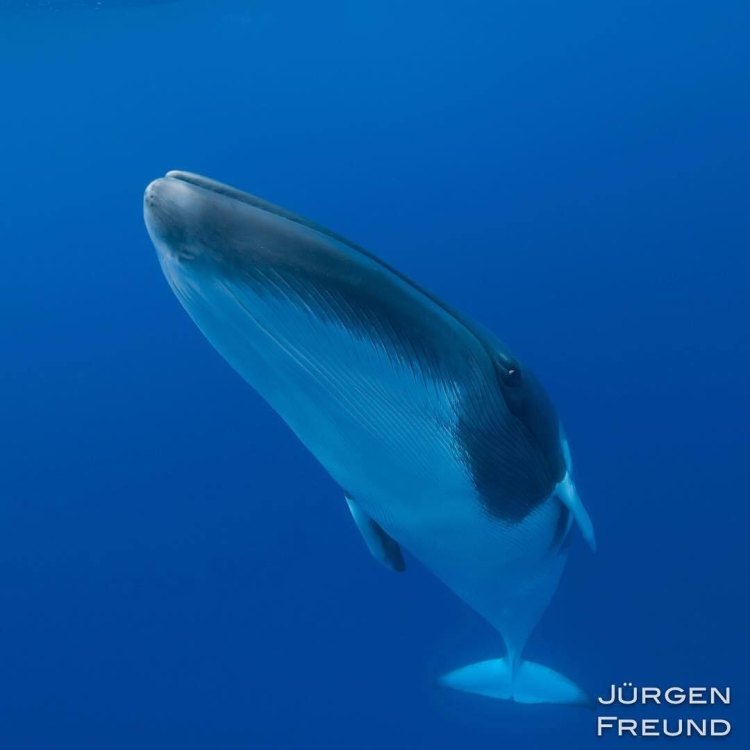
A Marvel of the Oceans: The Fascinating Minke Whale
Disclaimer: The content provided is for informational purposes only. We cannot guarantee the accuracy of the information on this page 100%. All information provided here may change without prior notice.

